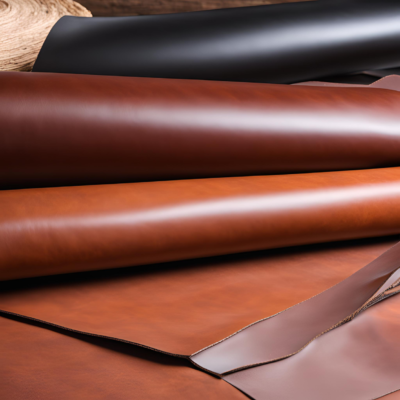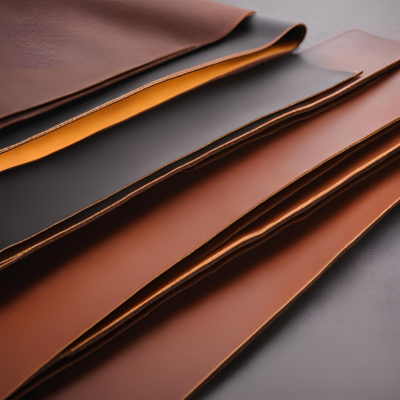Leather will always be the best material for creating lasting and appealing clothing and accessories suitable for outdoor use.
Its strength, lovely appearance, and potential to fade with time make it a material of choice for items such as backpacks, belts, and other accessories. Even when choosing between one type of leather and another, this becomes a challenge that is quite hard to solve. This guide will allow you to pass through the different types of leather, their characteristics, and the steps that should be taken to ensure that the correct type of leather is chosen when manufacturing material for outdoor products.
The following contents relate to the types of leather, which is an essential factor that defines which leather type is suitable for certain products and their production.
Leather comes in many types, and it is a special kind used in various activities due to its different qualities. Here are the main types commonly used in outdoor gear: Here are the main types widely used in outdoor gear:
Full-Grain Leather
Description: This is the best leather commonly used, as it is gotten from the outermost part of the skin. It still keeps the natural grain and all its flaws, making it very hard and virtually immune to wear-out.
- Properties: Full-grain leather is porous, allows the leather to stretch, and can acquire a beautiful look due to the patina. Due to its toughness, it is very appropriate for rugged apparel such as backpacks and belts. It is also very soft in feel.
- Best for: Heavy-duty belts, best-quality t-shirts and jeans, flicker bags, safety gear, and refined Extra and Ultra-premium segment products required for outdoor and decades-long use.
Top-Grain Leather
Description: Top-grain leather is ranked slightly lower than full-grain leather, but it takes more time to even out the surface and polish it. It is neater and uniform in texture and overall look compared to rayon.
- Properties: This leather type is also solid but less rigid than the full-grain because it is much more susceptible to scratches. With add-ons such as dyes and finishes, it has the added beauty of looking very impressive.
- Best For Jackets and accessories designed for style-conscious but active males, where lower weights and multiple carrier options are priorities. The gear has to be able to take punishment.
Split Leather
Description: Split leather is obtained after removing the top layer, and split leather comes from the rest of the hide layers. It is comparatively less durable and generally used with cheap articles.
- Properties: It has less strength and durability than full-grain and top-grain leather, but it is somewhat flexible and can be processed to look better.
- Best For: Specific products for which cost is a consideration more than other characteristics, like some kinds of belts and lighter-weight bags.
Advantages & Disadvantages of Leather and Some Things to Get to Consideration
Thus, in choosing the right leather for your outside apparel, it is necessary to pay attention to the type of leather and some other characteristics. Here’s what you need to keep in mind: Here’s what you need to keep in mind:
Durability
- Importance: When it comes to clothing specifically designed for outdoor use, the most important factor is usually the item’s sturdiness. Leather is distinctive because it is quite durable and does not require much care, but this depends on the kind of leather used.
- Tip: Choose full-grain or top-grain leather to ensure a long-lasting product. These wardrobes will endure terrain and last for many years, creating a fine layer of patina.
Water Resistance
- Importance: Water resistance is inherent in leather, but it may differ; if necessary, it can affect oils or waxes.
- Tip: Speaking of backpacks and similar accessories that will be using leather exposed to the impact of atmospheric influences in a short time, it is recommended to use leather chemically treated with waterproofing preparations. Daily use of leather conditioner will also aid in keeping the leather surface waterproof since water damage is one of the most destructive forces on leather.
Aesthetics and Finish
- Importance: Leather can and does come in various finishes, from looking like it has been treated with practically no further processing other than dyeing to a much smoother finish like top-grain leather.
- Tip: The main point that must be noticed is the appearance that will be created. Full-grain leather gives a material a unique and deep look; top-grain leather is smoother. Select an appropriate finish based on the user’s preferred look and the intended applications of the gear.
Weight and Flexibility
- Importance: Thus, the leather’s weight and flexibility/set-up influence the gear’s comfort and practicality.
- Tip: For the straps, it is recommended to look for leather that is both strong and flexible, like the leather used for backpacks and belts. This type of leather is best for these applications.
Maintenance Requirements
- Importance: Thus, it is essential to understand that different types of leather need to be maintained in different ways.
- Tip: Normal maintenance is easy if one embarks on regular conditioning of the full-grain leather material. While top-grain leather does not require constant moistening, it can occasionally use some revitalization.
Conclusion
Selecting the right leather to be used to make the outdoor gear is a combination of the knowledge one has of the material and the factors required. Still, full-grain leather is a premium type of exceptionally robust leather with a significant appearance in most high-end equipment. Top-grain leather is moderately recommended for wear and appearance; genuine and split leathers are cheaper. Points like the degree of ‘wear and tear’ of the material, water resistance, appearance, and need for further treatment to make the leather suitable again can make you choose the best leather to put on your bag so that it not only lasts long but can also be fashionable in your next adventure. Whether an Off-track hiker, a casual camper, or a lover of fine artistry used in technical gear, the right leather goes a long way in outdoor equipment.

